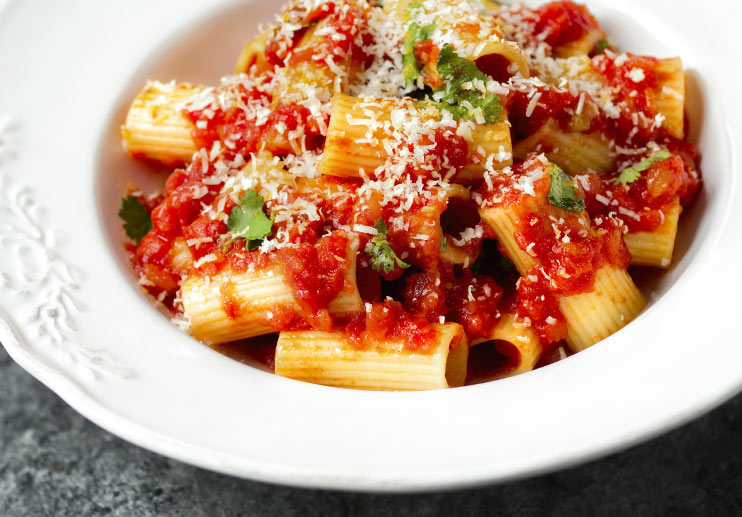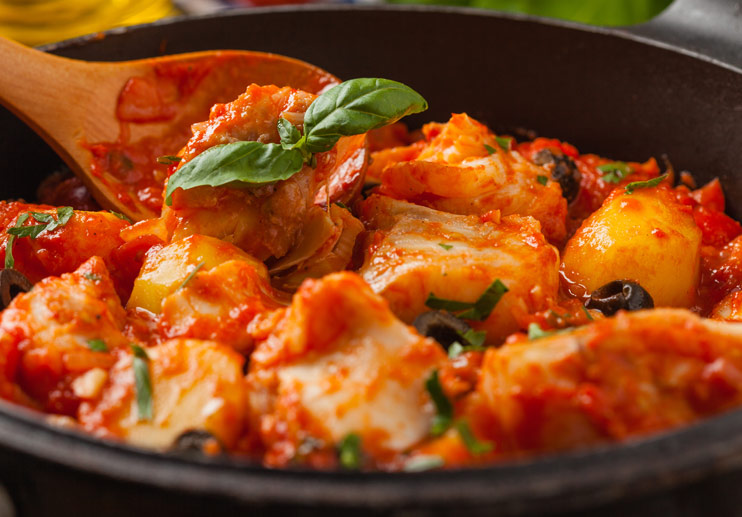My Merry Band of Tasters and I were treated to this colorful dish for lunch at the Di Mercurio family’s farm, and master miller Duccio Morozzo and I liked it so much we decided to recreate it back in his Roman kitchen. The tomato purée we used is called passata. Find it at larger supermarkets or online. Back in the US we also use high-quality crushed tomatoes.
Ingredients
- Coarse salt (kosher or sea), to taste
- 1/4 cup extra virgin olive oil, plus more for drizzling
- 1/2 red bell pepper, stemmed, seeded, and diced
- 1/2 small eggplant, stemmed, peeled, and diced
- 1/2 small zucchini, stemmed and diced
- 1 small red onion, peeled, and diced
- 1/2 pound (8 ounces) uncooked rigatoni
- 3 cups high-quality jarred tomato purée or crushed tomatoes
- Parmigiano-Reggiano, for serving
- Crushed red pepper flakes, for serving
Directions
Step 1
Bring a large pot of salted water to a boil. Pour 1/4 cup of olive oil into a cold saucepan. Add the bell pepper, eggplant, zucchini, onion, and a pinch or two of salt. Sauté the vegetables until they’re soft and cooked through, 10 to 12 minutes.
Step 2
In the meantime, add the pasta to the boiling water and cook until al dente according to the package directions.
Step 3
Stir the tomato purée into the vegetables and simmer over medium-low heat for 5 minutes. Purée the sauce with a stick blender until it’s fairly smooth. Season with additional salt, if desired. Drain the rigatoni and add to the sauce. Gently stir to combine. Transfer to a warmed shallow bowl and serve with grated Parmigiano-Reggiano, hot red pepper flakes, and extra olive oil for drizzling.
Serves 4 — Recipe courtesy of the Fresh-Pressed Olive Oil Club




